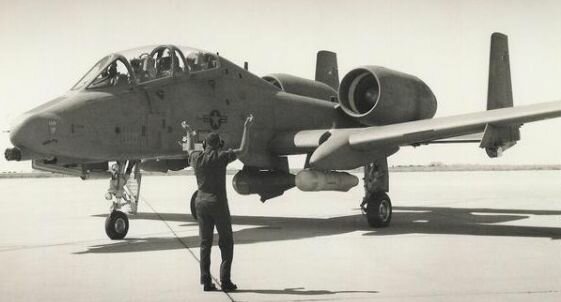isayyo2
Lurker alert
- Joined
- 24 November 2011
- Messages
- 1,087
- Reaction score
- 2,149
For the past month or so I've been reading into the AH-56 and AX fly off here on our forum as well as DTIC thesis' like so: THE WARTHOG: THE BEST DEAL THE AIR FORCE NEVER WANTED
The conclusion which shouldn't surprise many "There is a fair amount of evidence to indicate that the USAF did not plan to use the A-10 for any other purpose than to kill the Army’s Cheyenne program--to keep the Army out of the CAS mission." With that said, does an inservice Cheyenne by 1970 totally kill off the AX program? If so, then the A-7 becomes the USAF sole dedicated CAS/BAI program coming out of Vietnam. Could the Air Force accept advanced variants like the A-7DER or even the A-7X before 1980, or would they shift even more funding into the F-16 program? Can a forced A-7X kill the NACF F/A-18 for the Navy and Marines?
In my ideal, naive world, the TF41 Spey gets tapped as a full TF30 replacement for the A-7, F-111, and F-14 programs. A 17,000/25-30,000lb advanced TF41 variation seems to be more than possible by the mid 70s as mentioned in norseman's post: 25K Spey project. Perhaps then Congress can force an A-7X "Corsair III" on both services to kill off the F/A-18 and supplement the F-16, as well as making up for the 700 plane gap without the A-10s. A notional Corsair III would be stretched back into the 50-54ft range to accommodate the new engine, more fuel, and ideally the GAU-8 itself in some form; the all weather radar would be further enhanced by an internal FLIR, EO camera, and laser designator. Coming into the service by the early 80s, it would for stick around 30 years or so until being replaced by a JSF analogue.
Would love to hear everyones thoughts!
The conclusion which shouldn't surprise many "There is a fair amount of evidence to indicate that the USAF did not plan to use the A-10 for any other purpose than to kill the Army’s Cheyenne program--to keep the Army out of the CAS mission." With that said, does an inservice Cheyenne by 1970 totally kill off the AX program? If so, then the A-7 becomes the USAF sole dedicated CAS/BAI program coming out of Vietnam. Could the Air Force accept advanced variants like the A-7DER or even the A-7X before 1980, or would they shift even more funding into the F-16 program? Can a forced A-7X kill the NACF F/A-18 for the Navy and Marines?
In my ideal, naive world, the TF41 Spey gets tapped as a full TF30 replacement for the A-7, F-111, and F-14 programs. A 17,000/25-30,000lb advanced TF41 variation seems to be more than possible by the mid 70s as mentioned in norseman's post: 25K Spey project. Perhaps then Congress can force an A-7X "Corsair III" on both services to kill off the F/A-18 and supplement the F-16, as well as making up for the 700 plane gap without the A-10s. A notional Corsair III would be stretched back into the 50-54ft range to accommodate the new engine, more fuel, and ideally the GAU-8 itself in some form; the all weather radar would be further enhanced by an internal FLIR, EO camera, and laser designator. Coming into the service by the early 80s, it would for stick around 30 years or so until being replaced by a JSF analogue.
Would love to hear everyones thoughts!




